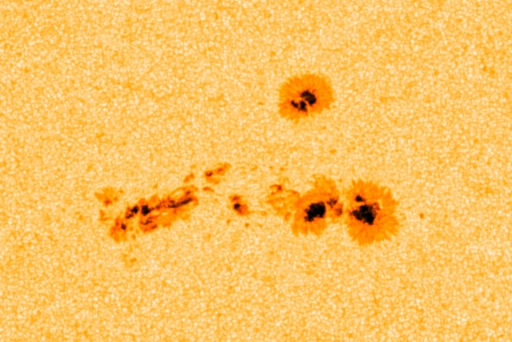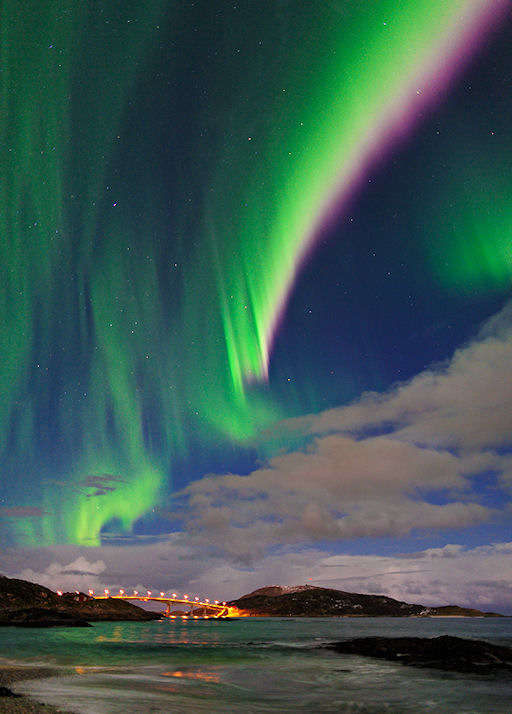ELECTRIC POWER IN PERIL? Modern power grids are increasingly vulnerable to strong solar storms. A new NASA project named "Solar Shield," however, could help keep the lights on. Get the full story from Science@NASA.
BIG SUNSPOT: Sunspot group 1117 continues to grow, more than doubling in area during the past 48 hours: movie. Each of the primary dark cores in this Oct. 26th snapshot from the Solar Dynamics Observatory is fully as wide as Earth:

The sunspot's magnetic field is crackling with B- and C-class solar flares: 36-hour movie. So far, these impulsive eruptions have not hurled any substantial clouds toward Earth. A big flare would be geoeffective, however, because the sunspot is almost-squarely facing Earth. Stay tuned!
more images: from Monty Leventhal OAM of Sydney, Australia.
ARCTIC AURORA OUTBURST: On Oct. 24th, an outburst of color bright enough to rival the Moon spread across the skies of Scandinavia. Thilo Bubek sends this picture from the outskirts of Tromsø, Norway:

"The auroras were beautiful," says Bubek. Bright moonlight often overwhelms auroras, but in this case the nearly-full Moon was an asset. "It illuminated the landscape, setting the stage for a nice photo-op."
The source of the display was a high-speed solar wind stream, which hit Earth's magnetic field over the weekend, sparking two days of intermittent polar geomagnetic activity. It could turn into three days: High-latitude sky watchers should be alert for more auroras tonight as the solar wind continues to blow.
UPDATED: October 2010 Aurora Gallery
[previous Octobers: 2009, 2008, 2007, 2006, 2004, 2003, 2002, 2001]
Potentially Hazardous Asteroids (
PHAs) are space rocks larger than approximately 100m that can come closer to Earth than 0.05 AU. None of the known PHAs is on a collision course with our planet, although astronomers are finding
new ones all the time.
On October 26, 2010 there were 1155 potentially hazardous asteroids.
Notes: LD means "Lunar Distance." 1 LD = 384,401 km, the distance between Earth and the Moon. 1 LD also equals 0.00256 AU. MAG is the visual magnitude of the asteroid on the date of closest approach. | | The official U.S. government space weather bureau |
| | The first place to look for information about sundogs, pillars, rainbows and related phenomena. |
| | Researchers call it a "Hubble for the sun." SDO is the most advanced solar observatory ever. |
| | 3D views of the sun from NASA's Solar and Terrestrial Relations Observatory |
| | Realtime and archival images of the Sun from SOHO. |
| | from the NOAA Space Environment Center |
| | the underlying science of space weather |

